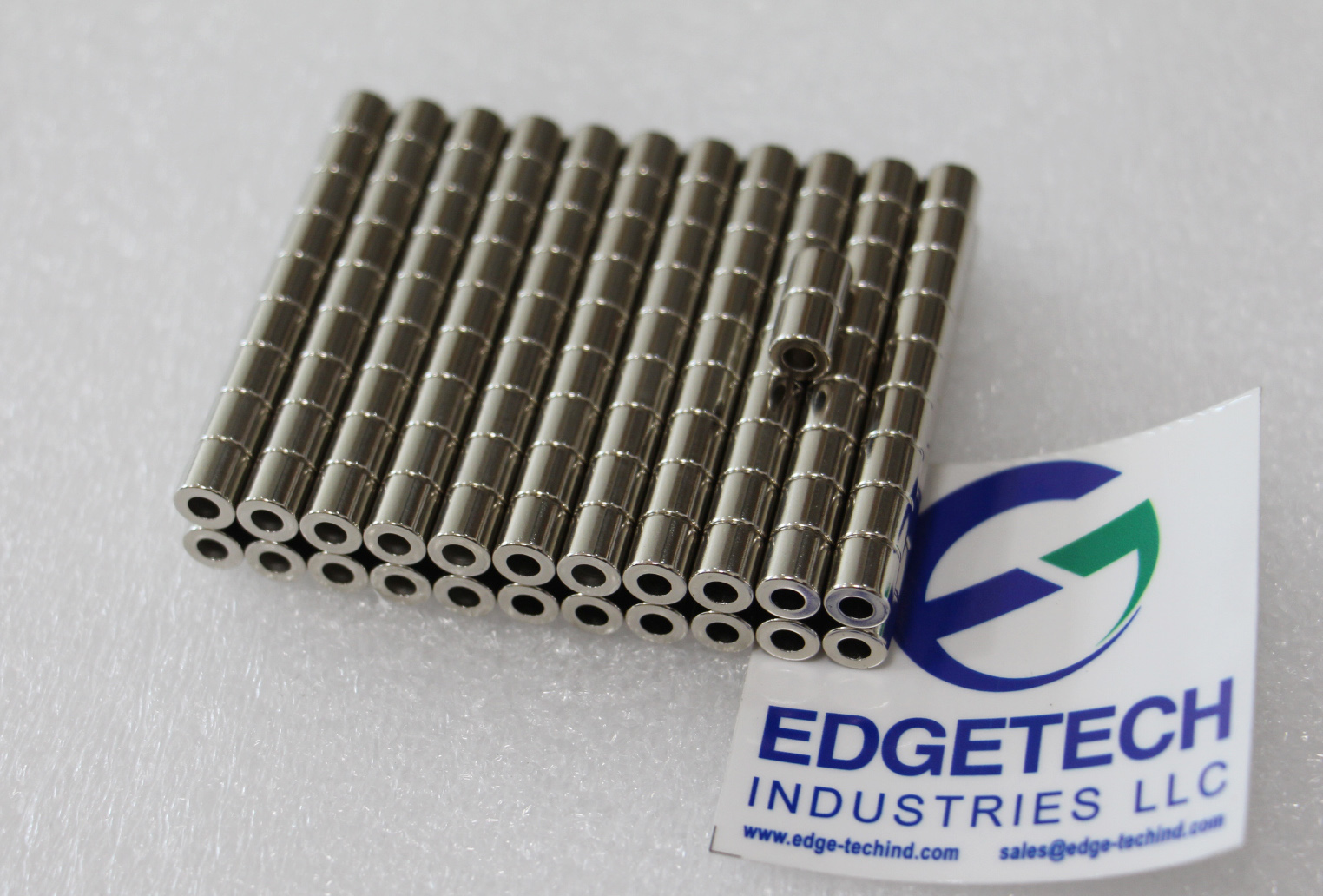
Magnetism is the basic property of matter as well as force, heat, electricity and light. Materials with ferromagnetism are usually called magnetic materials. The biggest characteristic of magnetic materials is the hysteresis behavior, that is, the magnetization M changes with the external magnetic field. When H returns from a certain state to zero, M still maintains a certain size. Only when the magnetic field is applied in the opposite direction M drops to zero, so that the reciprocal change of M with H is a loop instead of a single curve.
Figure 1-1 shows a schematic diagram of a typical hysteresis loop.
The main parameters describing the characteristics of the hysteresis loop are:
(1) Residual magnetic induction Br, (or residual magnetic polarization Jr=AMr) (remanent magnetism for short) is the magnetic flux density when the magnetic field H=0 in the magnet;
(2) The coercive force HcB (or intrinsic coercive force HcJ) is the reverse magnetic field H necessary for the magnetic flux density B=0 (or magnetic polarization J=0);
(3) The maximum magnetic energy product (BH)max (magnetic energy product for short) is the magnetic energy product with the largest product of B and H on the demagnetization curve (the second quadrant of the hysteresis loop).
Materials with different hysteresis loops are used in different application fields. These materials are generally divided into two categories: one is soft magnetic materials with low coercivity (HcJ<100A/m), and the other is coercivity. Permanent magnet materials with large force (also called hard magnetic materials) (Hc>1000A/m).
The characteristic of the permanent magnet is that after being magnetized by the external magnetic field, the magnetic field can be kept stable for a long time after the external field is removed. The most comprehensive criterion for the performance of permanent magnetic materials is the shape of the demagnetization curve under various external conditions (external magnetic field, temperature, time, radiation, vibration, etc.), but for simplicity, usually only the above mentioned Three parameters and its stability are measured: the size of the magnetic energy product (BH)max, which characterizes the ability of permanent magnets to provide magnetostatic energy, that is, in the case of meeting the same magnetic field value and spatial range, (BBD) large materials are used Less material; the greater the residual magnetization Br, the greater the magnetic field strength that the magnet may provide to the space; and the material with a large HcJ has strong anti-interference ability. Therefore, the higher the above three parameters, the better the magnetic properties of the permanent magnet. The temperature stability of permanent magnetic materials mainly refers to the temperature coefficient and irreversible loss of the material. The temperature coefficient (or reversible temperature coefficient) refers to the percentage of reversible change in residual magnetism or coercive force when the temperature changes. The irreversible loss refers to the rate of change of the open-circuit magnetic flux starting from room temperature and returning to room temperature after heating or cooling. For permanent magnetic materials, the smaller the absolute value of the temperature coefficient and the irreversible loss, the better.
We mainly provide rare earth permanent magnets, including neodymium iron boron magnets and samarium cobalt permanent magnets.
永磁材料的磁性特征
磁性与力,热,电,光一样是物质的基本属性. 具有铁磁性的材料通常称为磁性材料。磁性材料的最大特征就是具有磁滞行为即磁化强度M随外磁场互变化的滞后行为,当H从某个状态回到零时,M还保持一定的大小,只有在反方向施加磁场才会将M降到零,从而M随H的往复变化呈回线而非单的曲线。图1-1给出了典型磁滞回线的示意图。描述磁滞回线特征的主要参数是:
(1) 剩余磁感应强度Br,(或剩余磁极化强度Jr=AMr)(简称剩磁),是磁体内部磁场H=0时的磁通密度;
(2) 矫顽力HcB(或内禀矫顽力HcJ),是使磁通密度B=0 (或磁极化强度J=0)所必须的反向磁场H;
(3) 最大磁能积(BH)max(简称磁能积),是退磁曲线(磁滞回线第二象限部分)上B和H乘积最大的磁能积。
具有不同磁滞回线的材料用于不同的应用领域,这些材料通常划分为两大类:一类是矫顽力较小的软磁材料(HcJ<100A/m),另一类是矫顽力较大的永磁材料(也称硬磁材料)(Hc>1000A/m)。
永磁体的特征是在受外磁场磁化后,撤去外场仍能长时间稳定地保持磁性。永磁材料性能的好坏,最全面的判据是在各种外界条件(外磁场、温度、时间、辐射、振动等)下的退磁曲线的形状,但为了简便起见,通常只用上面提到的三个参数及其稳定性来衡量:磁能积(BH)max的大小,表征永磁体提供静磁能的能力,即在满足同样的磁场值和空间范围的情况下,(BBD)大的材料用料少;剩磁Br越大,磁体可能向空间提供的磁场强度越大;而HcJ大的材料,抗干扰能力强。所以,上述三个参数越高,永磁体磁性能越好。永磁材料的温度稳定性主要是指材料的温度系数和不可逆损失。温度系数(或称可逆温度系数)是指温度改变时,剩磁或矫顽力可逆改变的百分比。不可逆损失是指由室温开始,经过加热或冷却再回到室温时开路磁通的变化率。对永磁材料来说,温度系数的绝对值和不可逆损失越小越好。
我们主要提供稀土永磁磁铁,包括钕铁硼磁铁和钐钴永磁铁。